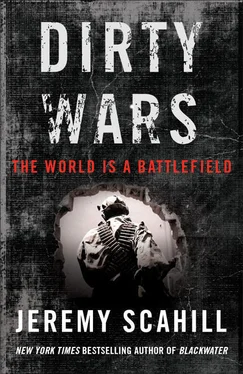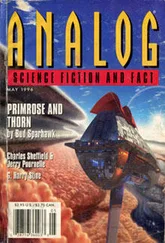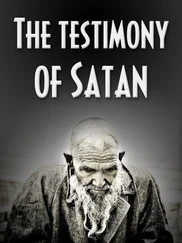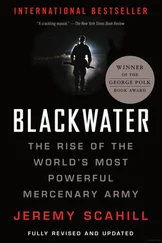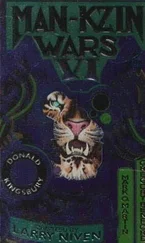Anwar “never told me he had the problem in New York,” Nasser recalled. What about Anwar’s interactions with the FBI and possible attempts to flip him? “He never told me about this,” Nasser added. The FBI refused to shed light on what exactly happened with Awlaki in late 2002 and why. That leaves many unanswered questions, including ones that would weigh heavily on events to come. Did the Feds have Awlaki ensnared in their web because of threats of prosecution for soliciting prostitutes or his interactions with the hijackers? Did they blackmail him into cooperating? Was Awlaki cooperating with the FBI in an effort to pay his dues in return for being left alone by the government? If so, had he realized that the government would never leave him alone and he would forever be asked to work as an informant?
“My guess, and it is only a guess, is that there was a plan to attempt a recruitment,” a former senior FBI counterterrorism agent told me. “If Awlaki was pitched and pretended to accept, that would explain the dismissal of the warrant after he was released. My guess is that he pretended to cooperate for a while and then just split. This would also explain the FBI’s reluctance to reveal more about the active case that they had in San Diego. Too embarrassing.” If this were the truth, it would be in neither party’s interest to acknowledge it. In any case, said Nasser, Anwar “decided that it’s not really good for him to stay around again in America.” In late December, Awlaki left the United States, this time for good. A year later, an FBI official was asked why Awlaki had been allowed to leave. “We don’t know how he got out,” was the reply.

6. “We’re in a New Kind of War”
DJIBOUTI, WASHINGTON, DC, AND YEMEN, 2002—In mid-2002, US intelligence operatives discovered that the man they had fingered as one of the masterminds of the 2000 USS Cole bombing, Abu Ali al Harithi, was in Yemen. US officials had dubbed him “the godfather of terror in Yemen.” For months, JSOC teams and drones had been hunting him to no avail and US ambassador Edmund Hull had been meeting with tribal officials in Marib, paying them for information on Harithi’s location and movements. Harithi used multiple mobile phones and regularly swapped out their SIM cards to avoid detection. On Sunday, November 3, the Special Ops signals intelligence team inside Yemen located Harithi in a compound in Marib after he used a mobile phone number that US intelligence had traced to him months earlier. “Our Special Ops had the compound under surveillance,” recalled General Michael DeLong, at the time deputy commander of US Central Command. They were “preparing to storm in when Ali exited with five of his associates. They got into SUVs and took off.”
As part of the operation, the CIA had launched an MQ-1 Predator drone from its outpost in Djibouti into Yemen’s airspace. But this wasn’t just a spy drone—it was armed with two antitank Hellfire missiles. The drone was under the operational control of the CIA’s highly secretive Special Activities Division and a live video feed from the drone was piped into the Counterterrorism Center in Langley, Virginia, as well as to the command center in Djibouti. “Now we were involved in a high-speed Predator chase,” according to DeLong.
The video feed from the drone showed Harithi and his cohorts driving off in a convoy at dawn in their dusty Toyota Land Cruiser, one hundred miles outside of Sana’a. The men were driving through Marib, where the US ambassador was scheduled to visit the following day. As the convoy circled the Yemeni desert, Harithi’s driver shouted into a satellite phone, speaking to a man with whom the al Qaeda operatives were supposed to rendezvous. “We’re right over here,” he yelled. Intelligence analysts determined that Harithi’s voice could be heard in the background giving instructions to the driver and that the drone had a solid lock on the jeep. “Our intel says that’s him,” DeLong said to CIA director George Tenet, as they both monitored the live feed from their respective locations. “One of them is an American—the fat guy. But he’s al Qaeda.”
Tenet called Saleh and informed him that he was going to give the go-ahead for the strike. Saleh consented but was emphatic that the mission be kept secret. Tenet agreed. “We didn’t want publicity, either,” DeLong recalled. “If questions did arise, the official Yemeni version would be that an SUV carrying civilians accidentally hit a land mine in the desert and exploded. There was to be no mention of terrorists, and no mention of missiles fired.”
Once the formalities were taken care of, Tenet gave the green light for action. A five-foot-long Hellfire missile slammed into the jeep, blowing it up. One passenger survived the strike and managed to crawl about twenty-five yards before collapsing and dying. As the jeep’s remnants continued to burn in the desert, a CIA operative went to examine the aftermath of the strike and to obtain DNA samples from the dead. A few days later, it was revealed that among those killed in the strike was Ahmed Hijazi, also known as Kamal Derwish, a US citizen born in Buffalo, New York. After the attack, US officials publicly tied Hijazi to what they described as a terror cell in Buffalo, known as the “Lackawanna Six.” Hijazi had been named as an unindicted co-conspirator in the alleged plot of six Yemeni Americans to provide material support to al Qaeda. Civil liberties organizations alleged that the men had been encouraged and ultimately entrapped by the FBI. The men had been arrested two months before Hijazi’s killing. FBI investigators in the case alleged that Hijazi was a “card carrying member of al Qaeda” who was helping to run a sleeper cell in Buffalo.
A day after the drone strike, President Bush was in Arkansas stumping for Republican candidates in the midterm congressional elections. Without specifically mentioning the strike, Bush sent a message about his strategy against al Qaeda operatives around the world. “The only way to treat them is [as] what they are—international killers,” Bush declared. “And the only way to find them is to be patient, and steadfast, and hunt them down. And the United States of America is doing just that.”
At the Pentagon, Defense Secretary Donald Rumsfeld deflected questions about the US role in the strike, saying only that if Harithi was killed, “it would be a very good thing if he were out of business.” When pressed on the extent of US operations in Yemen, Rumsfeld would only say, “We have some folks in that country,” adding, “I’m not going to get into the arrangements we have with the government of Yemen, other than to say what I said.”
While the Bush administration characterized the attack that killed Hijazi and Harithi as a successful takedown of a dangerous high-value target, unnamed officials revealed in multiple media outlets that it was a US operation but said they were reluctant to discuss the US role because of the damage it could do to Saleh’s government. “Most governments aren’t keen on the idea of U.S. hit squads or unmanned Predators roaming their country, executing summary justice,” reported Newsweek, adding that Saleh had given the United States “consent to go after Al Qaeda with its own high-tech resources.” But then, on November 5, Paul Wolfowitz, the deputy defense secretary, openly confirmed it was a US strike, angering Saleh as well as the CIA. “It’s a very successful tactical operation, and one hopes each time you get a success like that, not only to have gotten rid of somebody dangerous, but to have imposed changes in their tactics and operations and procedures,” Wolfowitz declared on CNN. “And sometimes when people are changing, they expose themselves in new ways. So, we’ve just got to keep the pressure on everywhere we’re able to, and we’ve got to deny the sanctuaries everywhere we’re able to, and we’ve got to put pressure on every government that is giving these people support to get out of that business.”
Читать дальше
